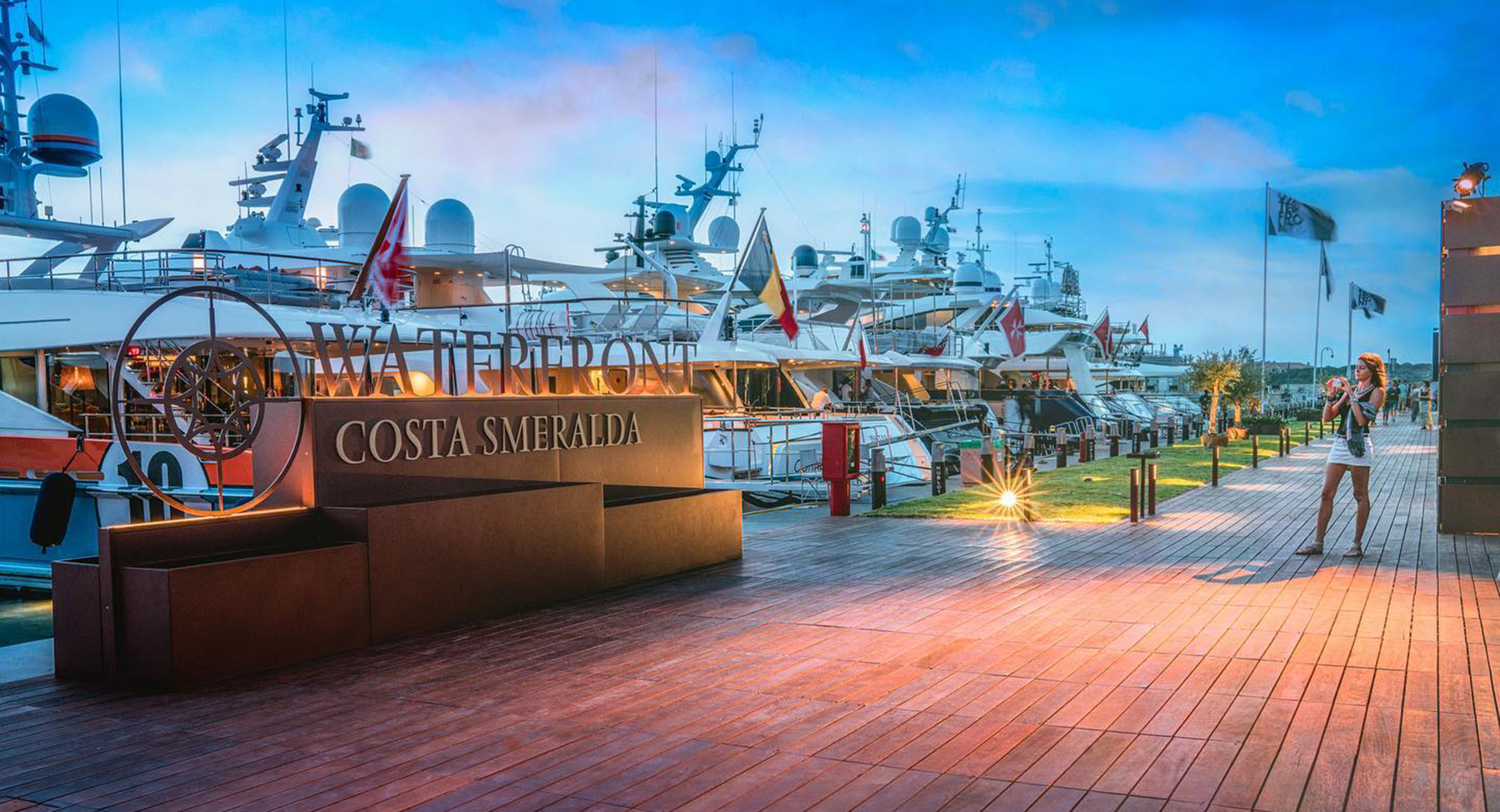Costa Smeralda more than a place is an idea.
Thanks to its white sand beaches, the parties with Briatore, Berlusconi’s villa with an outstanding fake volcano and to the Russian oligarch’s massive yachts, Costa Smeralda has gone from being one of the most unknown locations in Italy’s poorest region to a must visit for celebrities in the jet set.
It is now a symbol of Italian trash and yuppy culture and at the same time an attraction for the richest people in the whole world.
This short guide of Costa Smeralda will go deeper on the reasons why Porto Cervo became famous, we’ll talk you through the golden era of the 90s and finally, we will give you some advice on how to make the most out of your holiday in this amazing place.
It all began with a Persian prince and a French set designer
It seems that it all started back in the early ’60s. Karim al-Husaynī, Āgā Khān IV, was flying over Sardinia with his private jet and by chance watched outside the window seeing this wild and rugged stretch of land and fell in love with it.
Prince and 49th Imam of the Muslims Ismailiti Nizariti (in a dynastic line directed by Muhammad), Karim was 26 at the time and a recent graduated from Harvard, his girlfriend was a 20-year-old baroness, Anoushka von Mehks.
He had millions to invest: his father was the legendary Aly Khan, Prince of Persian dynasty, Pakistani UN ambassador, Rita Hayworth’s ex-husband; his mother was Joan Yarde-Buller, English highborn, former wife of a Guinness tycoon.
Costa Smeralda in the 1960s wasn’t called so, the region was almost uninhabited, used by random shepherds in winter. Aga Khan bought all the land for a bunch of dollars and decided to turn that forgotten place into the coolest holiday destination ever.
The list of things to do in order to make this happen was quite long. He first found a chic sounding and less Sardinian name to replace the previous one (Gallura), he then founded an association to manage the hotels and the towns.
The Prince contacted the eccentric French set designer, Jacques Couelle to take care of the project. Friend’s with Pablo Picasso and Salvador Dalí, Couelle created theatrical sets and had to improvise becoming a sculptor-architect with imaginative inclinations as well.
He imagined the building of an actual legend rather than just a project, the idea was to camouflage luxurious but rural villas within the vegetation and the colors of Sardinia. Couelle began to draw sketches with charcoal, taking inspiration from the most famous seaside architecture examples he could think of: the result is a real invention of a theatrical matrix, a mixture of Sardinian, Spanish, Provencal, Capri, and Amalfi forms and styles, Greeks, Apulians, Sicels and Maghrebis. The sublime summa of this madness is Cala di Volpe’s hotel in Porto Cervo, a mythologically inspired hotel: soaring towers, canals like in Venice, narrow windows of a convent and Moorish minarets. He even made up that the hotel had risen on the ruins of an ever-existing high-medieval convent, and today naive tourists admire its fake foundations.
In order to make his charcoal drawings concrete, he had to call proper architects, and he chose Luigi Vietti – former demiurge of the Italian dream holiday places popular in the 60s like Portofino and Cortina d’Ampezzo – he was actually the one to suggest to the prince the name of Costa Smeralda. Vietti – with the help of another great Italian architect such as Michele Busiri Vici- managed to bring the vision of Couelle into reality, imposing an architectural style that still dominates Costa Smeralda: light and sinuous curves, warm colors, exposed beams, ‘happy hour’ meeting squares breathing an irrepressible holiday air with a widespread welfare impression.

